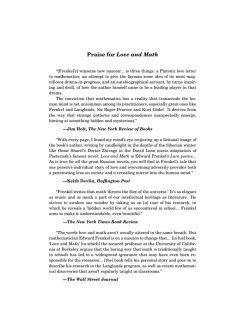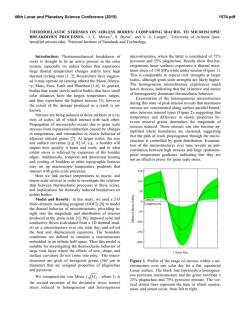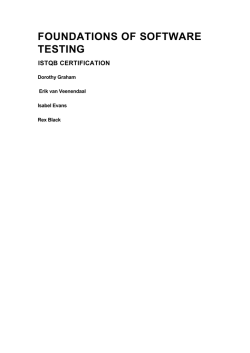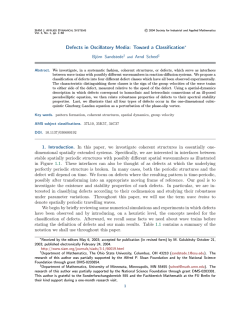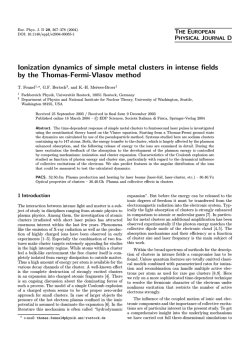
Point defects in ionic crystals
Point defects ionic crystals
¾ Ionic bonding and ionic crystals: Brief review
¾ Defects in ionic crystal and oxides. Kröger-Vink Notation
¾ Site, mass, and charge balance
¾ Frenkel and Schottky defects
¾ Extrinsic point defects in ionic crystals - impurities
¾ Non-stoichiometry in ionic crystals
Electronic defects in semiconductors
¾ Electronic defects in intrinsic semiconductors
optional reading
(not tested)
¾ Extrinsic electronic defects in semiconductors - doping
References:
Allen & Thomas, Ch. 5, pp. 263-270
Swalin: Ch. 14, pp. 317-350
University of Virginia, MSE 6020: Defects and Microstructure in Materials, Leonid Zhigilei
Ionic bonding: Brief review
Electropositive elements: Readily give up
electrons to become positive ions (cations)
inert
accept 1e-
Electronegativity - a measure of how
willing atoms are to accept electrons
accept 2e-
give up 3e-
give up 2e-
give up 1e-
Ionic bonding - typical between elements from horizontal extremities of the periodic table
Electronegative elements: Readily acquire
electrons to become negative ions (anions)
IA: Alkali metals (Li, Na, K…) - one electron in outermost occupied s subshell - eager to give up electron
VIIA: Halogens (F, Br, Cl...) missing one electron in outermost occupied p subshell - want to gain electron
Metals are electropositive – they can give up their few valence electrons to become positively charged ions
University of Virginia, MSE 6020: Defects and Microstructure in Materials, Leonid Zhigilei
Ionic bonding: Brief review
Example: table salt (NaCl)
Na has 11 electrons, 1 more than needed for a full outer shell (Neon)
11 Protons Na 1S2 2S2 2P6 3S1
11 Protons Na+ 1S2 2S2 2P6
donates
10 e- left
e-
Na
e-
Cl
Cl has 17 electron, 1 less than needed for a full outer shell (Argon)
17 Protons Cl 1S2 2S2 2P6 3S2 3P5
17 Protons Cl- 1S2 2S2 2P6 3S2 3P6
receives e18 e-
Na+
Cohesive energy of NaCl crystal (energy needed to convert NaCl
crystal into individual Na and Cl atoms):
Na (gas) + 5.14 eV (ionization energy) → Na+ + ee- + Cl (gas) → Cl- + 3.61 eV (electron affinity)
energy of (long-range) interaction among the ions
Na+ + Cl- → NaCl (crystal) + 7.9 eV
balance: ΔE = 7.9 eV - 5.1 eV + 3.6 eV = 6.4 eV per NaCl formula unit
< 0 → it costs energy to transfer e from Na to Cl
University of Virginia, MSE 6020: Defects and Microstructure in Materials, Leonid Zhigilei
Cl-
Ionic crystals: Brief review
• Charge neutrality: the total charge in the base must be zero
• There are no free electrons, ionic crystals are insulators
• Interatomic bonding is mostly defined by long-range inter-ionic Coulomb interactions ±q2/r
and is rather strong (Ec ~ 600-1000 kJ/mol ~ 6-10 eV/atom) and has no directionality
NaCl structure
fcc with 2 atoms in the base:
at (0, 0, 0) and (½, 0, 0)
Na+ ions filling octahedral
holes in the fcc structure
KCl, AgBr, KBr, PbS,
MgO, FeO
fluorite structure
fcc with 3 atoms in the base:
cations at (0,0,0) and two anions
at (¼, ¼, ¼), and (¼, ¾, ¼)
F- ions filling tetrahedral
holes in the fcc structure
CaF2 or ZrO2
University of Virginia, MSE 6020: Defects and Microstructure in Materials, Leonid Zhigilei
Ionic crystals: Brief review
zinc blende structure
CsCl structure
fcc with two atoms in the base
at (0,0,0) and (¼, ¼, ¼)
ZnS, CuF, CuCl
GaAs, GaP, InP- semiconductors
simple cubic with two atoms in
the base at (0,0,0) and (½, ½, ½)
CsCl, TlI, TlCl
AlNi, CuZn - intermetallic comp.
tetrahedral sites are preferred because of the
relative sizes of the positive and negative ions, but
not all of them are filled to maintain stoichiometry
spinel structure
named after the mineral spinel (MgAl2O4)
Fe3+( Fe2+ Fe3+)O4, Mg2+( Al23+)O4, Fe3+(Cr23+)O4
can contain vacancies as an integral part of the
structure to satisfy the charge balance,
Fe21,67Vac2,33O32 if all Fe converted to Fe+3
University of Virginia, MSE 6020: Defects and Microstructure in Materials, Leonid Zhigilei
Defects in ionic crystal and oxides. Kröger-Vink Notation
Introduction of a concentration α of vacancies to Na+ sites (or the same
concentration of Cl- interstitials) creates net charge of -eαN charge in a
crystal with N lattice sites → very high energy → Na1-αCl cannot exist
pure ionic crystals must be perfectly stoichiometric (?)
introduction of impurities with different valence and electronegativity
than the host ions can require additional point defects to charge balance
The concentration of vacancies can be much higher than required by thermal equilibrium electrochemical equilibrium must be maintained. How to incorporate point defects into chemical
reaction equations?
Kröger-Vink Notation:
X YZ
X – nature of species located on a site: element symbol for an atom, V for vacancy
Y – type of the site occupied by X: (i for an interstitial, element symbol for site normally
occupied by this element)
Z – charge relative to the normal ion charge on the site
′ negative relative charge
• positive relative charge
x zero relative charge (x is often omitted)
University of Virginia, MSE 6020: Defects and Microstructure in Materials, Leonid Zhigilei
Kröger-Vink Notation X YZ
Examples:
interstitial Ag ion in AgCl:
Ag•i
vacancy on a Ag site in AgCl:
'
VAg
Ca2+ ion on a Na site in NaCl:
Ca•Na
vacancy on an O site in Al2O3:
VO••
Cu+ on a Cu2+ site CuO:
Cu'Cu
Intrinsic point defects and Pu
impurity in UO2 crystal
Y
In a generic discussion of defect
reactions, M and X are often used:
M - atom of electropositive element
X - atom of electronegative element
X U4+ ion O2- ion
Vacancy
Pu4+ ion
U site
UxU
O'U'''''
VU''''
Pu xU
O site
U•O•••••
OOx
VO••
Pu•O•••••
i site
U•i •••
Oi''
Vix
Pu•i •••
University of Virginia, MSE 6020: Defects and Microstructure in Materials, Leonid Zhigilei
Site, mass, and charge balance
Formation and annihilation of point defects in ionic crystals must satisfy the following 3 rules:
1. Site balance
– Ratios of regular lattice sites must be conserved, i.e., fixed proportion of M
and X sites must be created regardless of whether they are occupied or not.
Total number of sites may change, but the ratio must remain constant.
Example: Al2O3: by oxidation of aluminum create 3OO then 2AlAl must
also be created, although they may be vacant.
2. Mass balance
– Total number of atoms of each species on right and left side of defect formation reaction
must be equal
– Vacancies and electronic defects do not affect mass balance
3. Charge balance (electroneutrality)
– Compounds are assumed to remain neutral
Any charge inbalance, global or local, leads to high electrostatic energy that exceed any
other contributions to the Gibbs free energy, making the charged state to be strongly
nonequilibrium one.
University of Virginia, MSE 6020: Defects and Microstructure in Materials, Leonid Zhigilei
Frenkel defects
Frenkel defect (Frenkel pair) = vacancy + interstitial in close proximity
first discussed in 1926 by Frenkel for AgCl
+
two types of Frenkel defects:
• cation Frenkel pair: cation vacancy + cation interstitial
• anion Frenkel pair: anion vacancy + anion interstitial
Typically, the enthalpies of formation are very different for the two types and, in
a given crystal, one type of Frenkel defect is prevalent.
formation reaction for a cation Frenkel pair in AgCl:
'
AgxAg ↔ Ag•i + VAg
this reaction satisfies the mass, charge, and site balance
Analysis of the equilibrium concentration of Frenkel defects can be done similarly to our
derivation for vacancies. We just have to keep in mind that both vacancy and self-interstitial are
generated and ni = nv = nFP
University of Virginia, MSE 6020: Defects and Microstructure in Materials, Leonid Zhigilei
Frenkel defects
FP
n
Equilibrium concentration of Frenkel defects: ΔG = n FP ( Δh FP
f − T Δs f ) − T Δ S c
N!
N i!
S = k B ln v
+ k B ln i
v
n ! N −n !
n ! N i − ni !
n
c
(
)
(
)
where Ni is the number of interstitial sites (may
depend on configuration, e.g., dumbbell vs. octahedral)
n i = n v = n FP
∂Δ G
∂n FP
= Δh
FP
f
− TΔs
FP
v
FP
n FP = neq
⎛ neq neq ⎞
⎟=0
+ k BT ln ⎜⎜
i ⎟
⎝ N N ⎠
compound
reaction
Δh FP
f , eV
AgBr
x
'
AgAg
↔ Ag•i + VAg
FFx ↔ VF• + Fi'
x
''
CaCa
↔ Ca•i • + VCa
1.1
CaF2
Li2O
TiO2
x
LiLi
↔ Lii• + VLi'
OOx ↔ VO•• + Oi''
x
TiTi
↔ Tii•••• + VTi''''
OOx ↔ VO•• + Oi''
2.3-2.8
⎛ Ni
= ⎜⎜
N
⎝ N
neqFP
1/ 2
⎞
⎟⎟
⎠
⎛ ΔsvFP
exp ⎜⎜
⎝ 2k B
⎛ Δh FP
⎞
f
⎟⎟ exp ⎜ −
⎜ 2k T
B
⎠
⎝
⎞
⎟
⎟
⎠
to measure the concentration of intrinsic
point defects, ionic crystals of high purity
have to be made, e.g., by zone refining
7
2.3
8.7
Δh FP
includes energy of electrostatic interactions
f
12
3.0
UO2
UxU ↔ U•i ••• + VU''''
9.5
ZnO
OOx ↔ VO•• + Oi''
2.5
many more anion Frenkel defects than cation ones
from Allen & Thomas
University of Virginia, MSE 6020: Defects and Microstructure in Materials, Leonid Zhigilei
Schottky defects
Schottky defect = cation vacancy + anion vacancy in close proximity
formation reaction for a Schottky defect in BeO:
x
''
x
BeBe
+ OOx ↔ VBe
+ VO•• + BeBe
+ OOx
this reaction satisfies the mass, charge, and side balance
compound
Schottky defect
Δh SD
f , eV
α-Al2O3
2VAl''' + 3Vo••
26
CaF2
''
VCa
+ 2VF•
5.5
BeO
''
VBe
+ VO••
6
TiO2
NaCl
V + 2V
V + 2V
V +V
2.2-2.4
KCl
VK' + V
2.6
UO2
''''
Ti
''''
U
'
Na
••
O
••
O
•
Cl
•
Cl
5.2
6.4
electrostatic attraction between cation and
anion vacancies → binding energy of the
Schottky defect and temperature dependent
degree of association
equilibrium concentration:
⎛ ΔsvSD
= exp ⎜⎜
N
⎝ 2k B
neqSD
⎛ Δh SD
⎞
f
⎟⎟ exp ⎜ −
⎜ 2k T
B
⎠
⎝
⎞
⎟
⎟
⎠
relative low Δhf → Schottky defects dominate
from Allen & Thomas
University of Virginia, MSE 6020: Defects and Microstructure in Materials, Leonid Zhigilei
Extrinsic point defects in ionic crystals - impurities
Introduction of impurities may require simultaneous introduction of additional defects, e.g., in
addition to the thermally-induced (intrinsic) vacancies, some additional extrinsic vacancies may
be induced by impurity ions with valence different from the one of the ions in the host crystal.
Let’s consider incorporation of CaCl2 to KCl crystal as a substitutional impurity:
x
x
CaCl2 (s) + 2K Kx + 2ClCl
↔ Ca •K + VK' + 2ClCl
+ 2KCl(g)
or
x
CaCl2 ↔ Ca •K + VK' + 2ClCl
Site balance: the 1:1 ratio of K and Cl sites must be maintained. Two Cl anions occupy the
existing Cl sites → two cation sites must be created. One of the cation sites is occupied by Ca2+
and one is left vacant.
Mass balance: the numbers of atoms of each species on both sides of the equation are equal.
Charge balance: placing Ca2+ on a K+ gives a net charge of +1 that has to be compensated by a
vacancy.
If Ca2+ occupies an interstitial site, the equation has to be modified:
x
x
CaCl2 (s) + 2K Kx + 2ClCl
↔ Ca i•• + 2VK' + 2ClCl
+ 2KCl(g)
or
x
CaCl2 ↔ Ca i•• + 2VK' + 2ClCl
University of Virginia, MSE 6020: Defects and Microstructure in Materials, Leonid Zhigilei
Extrinsic point defects in ionic crystals - impurities
Different schemes of impurity incorporation can be sometimes distinguished from experimental
measurements of the effect of impurity concentration on material density.
Let’s consider incorporation of ZrO2 to Y2O3 crystal
Two simplest options:
(1) Zr4+ fully occupy Y sites and anion defects take care of the charge balance
2ZrO2 ↔ 2ZrY• + 3O Ox + Oi''
(2) O2- fully occupy O sites and cation defects take care of the charge balance
3ZrO2 ↔ 6O Ox + 3ZrY• + VY'''
Experimental observation that density of Y2O3 increases with addition of ZrO2 is in favor of
option (1), since appearance of vacancies would decrease density and Zr has slightly higher
atomic mass and smaller ionic radius than Y.
University of Virginia, MSE 6020: Defects and Microstructure in Materials, Leonid Zhigilei
Extrinsic point defects in ionic crystals - impurities
Let’s consider incorporation of CaO to ZrO2
Ca2+ cation, Zr4+ cation, O2- anion
We have two possible scenarios:
(1) charge compensation by anion vacancy
CaO ↔ Ca 'Zr' + O Ox + VO••
(2) charge compensation by Zr interstitials 2CaO + ZrZrx ↔ 2Ca 'Zr' + 2O Ox + Zri••••
site balance: 1Zr = 2Zr + 2O
null = ZrO2
need an extra Zr site
2CaO + ZrZrx + 2O Ox + ZrZrx ↔ 2Ca 'Zr' + 2O Ox + Zri•••• + ZrO2
Solid solutions produced by these different reactions will have different densities.
For reaction (1), the defective formula unit is made up of one Ca, one O, and one vacancy.
For reaction (2), the defective formula unit is made up of one Ca, two O, and one half of a Zr (in
an interstitial site). Thus, the formulas for weight and density of each solid solution are:
(1) x(M CaO ) + (1 − x)M ZrO2
ρ=
Z × [ x(M CaO ) + (1 − x)M ZrO2 ]
N aVcell
1
(2) x(M CaO2 + M Zr ) + (1 − x)M ZrO2
2
ρ=
Z × [ x(M CaO2 + 0.5M Zr ) + (1 − x)M ZrO2 ]
N aVcell
where M is the molecular weights of the corresponding species, Vcell is the volume of the unit
cell,
and ZofisVirginia,
the number
of6020:
formula
unitsand
perMicrostructure
unit cell.
University
MSE
Defects
in Materials, Leonid Zhigilei
Extrinsic point defects in ionic crystals - impurities
CaO ↔ Ca 'Zr' + O Ox + VO••
ρ=
Z × [ x(M CaO ) + (1 − x)M ZrO2 ]
N aVcell
2CaO + ZrZrx ↔ 2Ca 'Zr' + 2O Ox + Zri••••
ρ=
Z × [ x(M CaO2 + 0.5M Zr ) + (1 − x)M ZrO2 ]
small amount of CaO stabilizes cubic fluorite structure
(we are neglecting changes in the size of the unit cell with composition)
N aVcell
4×(ZnO2) per unit cell
Thus, the two hypothetical models predict ~8% difference in
the density. When mass and volume measurements can be
done with sufficient accuracy, it is possible to distinguish the
models.
ρ, g/cm3
For x = 0.15, Z = 4, MCaO = 56.2 g/mole, MZrO2 = 123.2 g/mole,
MCaO2 = 72.1 g/mole, MZr = 91.2 g/mole, and the cubic lattice
constant a = 5.15 Å, we calculate densities of ρ = 5.5 g/cm3 and
ρ = 5.95 g/cm3 for the vacancy and interstitial models, respectively.
Experiments by Diness and Roy [Solid State Commun. 3, 123, 1965]
University of Virginia, MSE 6020: Defects and Microstructure in Materials, Leonid Zhigilei
a
Extrinsic point defects in ionic crystals - impurities
concentration of point defects in
KCl with 0.1 ppm CaCl2
intrinsic (Schottky) defects:
x
x
K Kx + ClCl
↔ VK' + VCl• + K Kx + ClCl
⎛ ΔsvSD
= exp ⎜⎜
N
⎝ 2k B
neqSD
ln(10-7)
= 16.12
⎛ Δh SD
⎞
f
⎟⎟ exp ⎜ −
⎜ 2k T
B
⎠
⎝
⎞
⎟
⎟
⎠
Δh SD
= 2.6 eV
f
extrinsic defects
x
CaCl2 ↔ Ca •K + VK' + 2ClCl
extrinsic defects dominate at low T
from Allen & Thomas
University of Virginia, MSE 6020: Defects and Microstructure in Materials, Leonid Zhigilei
Non-stoichiometry
While some of the compounds become unstable at small deviations from stoichiometric
composition (e.g. NaCl), other compounds can exhibit large deviations from stoichiometric
composition or even be unstable at the stoichiometric composition (e.g. FeO - wüstite
phase).
M1−δO
MO
1
O2 ( g ) ↔ OOx + VM (transfer of neutral O)
For a transfer of oxygen to a metal oxide MO:
2
1
But if the crystal is ionic, O will accept 2 e- that should
O2 ( g ) ↔ OOx + 2h• + VNi''
come from metal that is already ionized, e.g., for NiO:
2
O2- Ni2+ O2- Ni2+
2+
Ni
O
2-
2+
Ni
O
2-
O2- Ni2+ O2- Ni2+
Ni2+ O2- Ni2+ O2-
1
O2 ( g )
2
O2- Ni2+ O2- Ni2+ O2Ni2+ • O2- VNi''
O2- Ni2+
h 2+
2O Ni • O2- Ni2+
h
Ni2+ O2- Ni2+ O2cation vacancy + 2 holes
Ni2+ can then transform into Ni3+ (2 Ni ions have to be transformed for each vacancy)
(equivalent to solution of Ni2O3 in NiO)
This scenario works for transition metals (e.g., Fe, Ti, Cu, Ni), where the ionization energy is
low, but not for metals with high ionization energy (e.g. Na or K)
University of Virginia, MSE 6020: Defects and Microstructure in Materials, Leonid Zhigilei
Non-stoichiometry
University of Virginia, MSE 6020: Defects and Microstructure in Materials, Leonid Zhigilei
Electronic defects in semiconductors
¾ Electronic defects in intrinsic semiconductors
¾ Extrinsic electronic defects in semiconductors - doping
optional reading
(not tested)
University of Virginia, MSE 6020: Defects and Microstructure in Materials, Leonid Zhigilei
insulators - semiconductors - metals
σ = n|e|μe + p|e|μh
σ (Ωcm)-1
n ≈ 1.4×1010 cm-3 (Si at 300 K)
n ~ 1 cm-3
n ≈ 1.8×1023 cm-3 (Al)
n - number of “free” or conduction electrons per unit volume
partially filled band
filled
valence
band
filled
band
empty
conduction
band
?
Energy
Energy
empty
band
empty
band
GAP
Eg < 2 eV
filled
valence
band
partly
filled
band
filled
band
filled
band
filled states
filled states
Eg > 2 eV
Energy
filled states
empty
conduction
band
filled states
Energy
overlapping bands
Cu: 1s22s22p63s23p63d104s1
filled
band
filled
band
Mg: 1s22s22p63s2
University of Virginia, MSE 6020: Defects and Microstructure in Materials, Leonid Zhigilei
Electronic defects in intrinsic semiconductors
ε
ε
T=0K
conduction band
EC
Eg
EV
Fermi level, EF
valence band
holes, h
0
1 f(ε)
EF represents probability of ½ that an available
energy state is occupied by an electron
EF = electrochemical potential of electrons
material
T>0K
electrons, e
Eg, eV
Si
1.1
SiC
2.9
ZnO
3.3
Al2O3
9.5
0
1 f(ε)
Thermal generation of electron-hole pairs.
Electrons excited to the conduction band leave holes
in the valance band
The concentration of electrons, n, in the conduction band
−1
⎡
⎛ ε − EF ⎞⎤
⎛ 2πme*kBT ⎞
⎟⎟⎥ dε ≈ 2⎜⎜
⎟⎟
n = ∫ g (ε) f (ε, T )dε = ∫ g (ε)⎢1 + exp⎜⎜
2
⎝ h
⎠
⎝ kBT ⎠⎦
EC
EC
⎣
∞
∞
3/ 2
⎛ E − EF ⎞
⎟⎟
exp⎜⎜ − C
kBT ⎠
⎝
3/ 2
⎛ 2me* ⎞
We used the free electron gas model approximations: g (ε) = 4π⎜⎜ 2 ⎟⎟ (ε − EC )1/ 2
⎝ h ⎠
∞
⎞
⎞
⎛
⎛
as well as 1 + exp⎜⎜ ε − EF ⎟⎟ ≈ exp⎜⎜ ε − EF ⎟⎟ and ∫ x exp(− x) = π / 2
⎝ kBT ⎠
⎝ kBT ⎠
0
University of Virginia, MSE 6020: Defects and Microstructure in Materials, Leonid Zhigilei
Electronic defects in intrinsic semiconductors
ε
⎛ 2πme*kBT ⎞
⎟⎟
n = 2⎜⎜
2
⎝ h
⎠
EC
3/ 2
Similarly, the concentration of holes, p, in the valence band
3/ 2
EV
⎛ E − EF ⎞
⎛ E − EF ⎞
C
⎟⎟ = Neff
⎟⎟
exp⎜⎜ − C
exp⎜⎜ − C
kBT ⎠
kBT ⎠
⎝
⎝
g(ε)
⎛ 2πmh*kBT ⎞
⎟⎟
p = 2⎜⎜
2
⎝ h
⎠
⎛ E − EV
exp⎜⎜ − F
kBT
⎝
⎞
⎛ E − EV
V
⎟⎟ = Neff
exp⎜⎜ − F
kBT
⎠
⎝
⎞
⎟⎟
⎠
C
V
Neff
and Neff
- effective densities of state at the conduction and valence band edges
for an intrinsic semiconductor:
ni = n = p
mh* Eg
3
+ kBT ln * ≈
EF =
me
2
2 4
Eg
intrinsic concentration of charge carriers:
⎛ Eg ⎞
C
V
⎟⎟
exp⎜⎜ −
ni = np = Neff
Neff
⎝ 2kBT ⎠
n = C T3/2 exp(-Eg/2kT)
depends only on T and Eg = EC -EV
University of Virginia, MSE 6020: Defects and Microstructure in Materials, Leonid Zhigilei
Electronic defects in intrinsic semiconductors
⎛ 2πme*kBT ⎞
⎟⎟
n = 2⎜⎜
2
h
⎝
⎠
3/ 2
⎛ Eg ⎞
⎛ Eg ⎞
C
⎟⎟ = Neff
⎟⎟
exp⎜⎜ −
exp⎜⎜ −
k
T
k
T
2
B ⎠
⎝ B ⎠
⎝
for T = 1500 K
h = 6.626×10−34 Js
kB = 1.381×10−23 J/K
me* ≈ 9.11×10−31 kg
C
Neff
⎛ 2πme*kBT ⎞
⎟⎟
= 2⎜⎜
2
⎝ h
⎠
3/ 2
= 2.8 ×1026 m-3
⎛ Eg ⎞
⎟⎟ = 0.014
exp⎜⎜ −
2
k
T
B ⎠
⎝
surprisingly good semiquantitative agreement,
given that very rough
approximations are used, e.g.
g(ε) for free electron model,
decrease of Eg with
increasing T is neglected…
Eg = 0.67 eV for Ge
Eg = 1.11 eV for Si
- can find Eg from the temperature dependence of
intrinsic carrier concentration
University of Virginia, MSE 6020: Defects and Microstructure in Materials, Leonid Zhigilei
Electronic defects in extrinsic semiconductors
Extrinsic semiconductors - electrical conductivity is defined by impurity atoms.
Si is considered to be extrinsic at room T if impurity concentration is one impurity per 1012 lattice sites
Unlike intrinsic semiconductors, an extrinsic
semiconductor
may
have
different
concentrations of holes and electrons.
p-type if p > n and n-type if n > p
intrinsic: n ≈ 1.4×1016 m-3 (Si at 300 K)
molar volume of Si ≈12 cm3/mol
NA ≈ 6×1023 atoms/mol
6×1023 / 12×10-6 = 5×1028 atoms/m3
fraction of excited intrinsic electrons per atom ~10-13
One can engineer conductivity of extrinsic semiconductors by controlled addition of impurity
atoms – doping (addition of a very small concentration of impurity atoms). Two common
methods of doping are diffusion and ion implantation.
n-type: excess electron carriers are produced by substitutional impurities that have more valence electron per
atom than the semiconductor matrix (elements in columns V and VI of the periodic table are donors for
semiconductors in the IV column, Si and Ge)
Example: P (or As, Sb..) with 5 valence electrons, is an electron donor in Si since only 4 electrons are used to
bond to the Si lattice when it substitutes for a Si atom. Fifth outer electron of P atom is weakly bound in a
donor state (~ 0.01 eV) and can be easily promoted to the conduction band.
p-type: excess holes are produced by substitutional impurities that have fewer valence electrons per atom
than the matrix (elements in columns III of the periodic table (B, Al, Ga) are donors for semiconductors in
the IV column, Si and Ge)
University of Virginia, MSE 6020: Defects and Microstructure in Materials, Leonid Zhigilei
Electronic defects in extrinsic semiconductors
Ec
EF
Ed
EV
Ec
EF
Ed
Ec
EF
EV
EV
T = 0K
Ec
T > 0K
donor dopant creates energy level near conduction
band
easy to promote electron from donor level to
conduction band
Fermi level moves toward conduction band
Ea
EF
EV
T = 0K
Ea
T > 0K
acceptor dopant creates energy level near valence
band
easy to promote electrons from valence levels to
acceptor band (create holes are in valence band)
Fermi level moves toward valence band.
Out of the total number of dopants (substitutional extrinsic point defects), some will be neutral
and some ionized. For example, for P in Si, the total concentration [P] = [P]0 + [P]+
⎛ E − Ed
[P+ ] = [P]{1 − f (Ed , EF , T)} ≈ [P] exp⎜⎜ F
⎝ kBT
⎞
⎟⎟
⎠
vacancies can also introduce energy levels within the band gap and can be ionized
University of Virginia, MSE 6020: Defects and Microstructure in Materials, Leonid Zhigilei
© Copyright 2025
